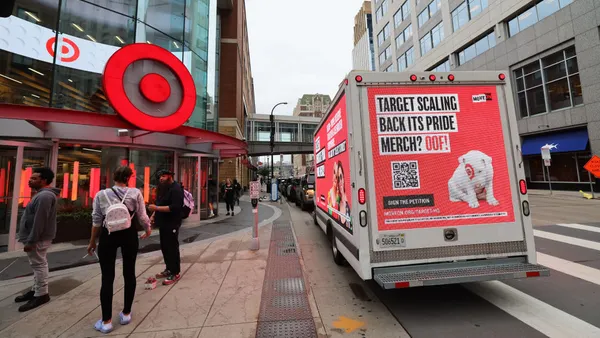Dive Brief:
- The showroom tour is an integral part of convincing drivers to buy a car, but a new study from the eye-tracking firm Tobii Pro finds auto brands only have a 20-second window to influence consumer opinion. Tobii Pro Insight, working at Dx3 Canada with Toyota Canada, had 92 participants wear proprietary wearable eye-tracker glasses which recorded what the users paid attention to, how long they focused on something and what they ignored, per a press release.
- Participants in the study were segmented into two groups: millennials and older shoppers. They explored an interactive automotive showroom at the Dx3 conference with a Toyota Corolla and RAV4 along with promotional materials, digital displays and Toyota brand ambassadors. Older consumers spent more time with almost all elements included in the study environment than millennial shoppers did. The younger car buyers preferred interactive displays while older shoppers viewed the textual elements of the display with more attention.
- Digital screens and interactive displays had a high level of engagement and captured around half of all attention compared to other showroom promotional elements. At the same time, the cars captured more attention than touch screens, brand ambassadors or other test area elements, commanding around 30 seconds on average for viewing the interior and exterior of the vehicles.
Dive Insight:
Toyota Canada and Tobii Pro's analysis suggests auto brands — or any brand with a heavy in-store or showroom element — might be seriously overestimating the amount of time they have to truly engage consumers and convince them to make a purchase. Their findings underscore how an element of interactivity, and especially one delivered via digital screens, can be a strong way to net the attention of shoppers and young customers, in particular.
"Consumers start with a broad scan of what is out there, but then they zero in on specific things to the exclusion of everything else," Mike Bartels, senior research director at Tobii Pro Insight, said in a statement. "In this all-or-nothing, high-stakes sales environment, it is critical that automotive marketers understand which features influence shoppers to buy and how the showroom can be optimized to make them commit."
Beyond auto showrooms, more businesses with heavy brick-and-mortar presences are pivoting to put a focus on in-store technology. Subway, for example, recently launched a "Fresh Forward" initiative to redesign its restaurants and customer experience, putting a premium on touchpoints like in-store kiosks. Late last month, McDonald's tapped the consultancy Capgemini and agency Publicis.Sapient to accelerate digital transformation at its restaurant locations in a similar manner.











